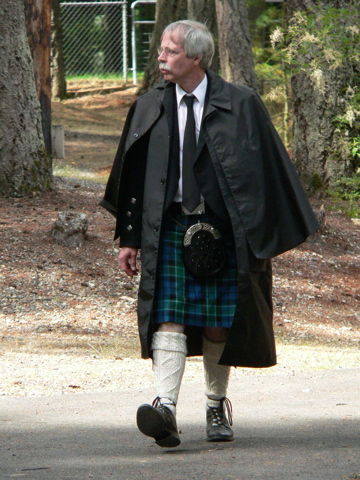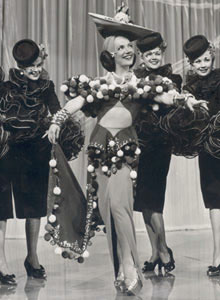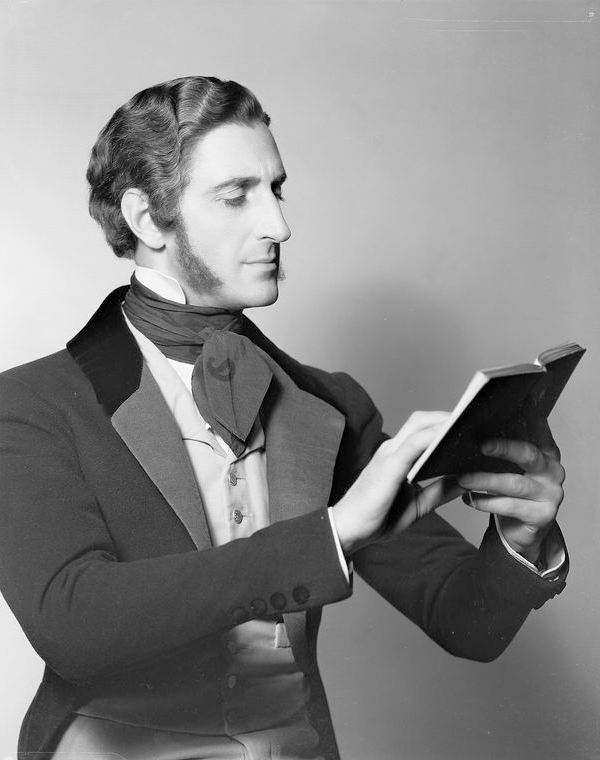|
Inverness Cape
The Inverness cape is a form of weatherproof outer-coat. It is notable for being sleeveless, the arms emerging from armholes beneath a cape. It has become associated with the fictional detective Sherlock Holmes. History The garment began in the 1850s as the Inverness coat, an outer coat with sleeves covered by a long cape, reaching the length of the sleeve. By the 1870s, the cape was divided in two, and a small "capelet"-like "wing" on each side was sewn into the side seams, not taken across the back. In the 1880s, the sleeves were removed entirely, and the armholes were cut away beneath the cape to form the Inverness ''cape.'' The fronts of the coat may be finished in either of two styles: in one, the more formal, the topcoat is finished with short lapels and the capes are set back behind them. In another style, there are no lapels. A simple fall collar with a tall stand is used, the capes buttoning across. These were also favored for less formal wear, particularly by coachm ... [...More Info...] [...Related Items...] OR: [Wikipedia] [Google] [Baidu] |
Lapel
Lapels ( ) are the folded flaps of cloth on the front of a jacket or coat (clothing), coat below the collar and are most commonly found on formal clothing and suit (clothes), suit jackets. Usually they are formed by folding over the front edges of the jacket or coat and sewing them to the collar, an extra piece of fabric around the back of the neck. There are three basic forms of lapels: notched, peaked, and shawl. Notched lapels, the most common, are usually seen on business suits, and on more casual jackets like blazers and sport coats. Peaked lapels are more Formal wear, formal, and nearly always used on double breasted jackets, but also frequently appear on single breasted ones.Flusser (2002). p. 85 Shawl lapels are usually carried by tuxedos and mess jackets.Antongiavanni (2006). p. 172 Types of lapel Notched lapel The notched lapel (American English), step lapel or step collar (British English) is sewn to the collar at an angle, creating a step effect. This is the standa ... [...More Info...] [...Related Items...] OR: [Wikipedia] [Google] [Baidu] |
Sporran
The sporran (; Scottish Gaelic and Irish for " purse"), a traditional part of male Scottish Highland dress, is a pouch that performs the same function as pockets on the pocketless kilt. Made of leather or fur, the ornamentation of the sporran is chosen to complement the formality of dress worn with it. The sporran is worn on a leather strap or chain, conventionally positioned in front of the groin of the wearer. Since the traditional kilt does not have pockets, the sporran serves as a wallet and container for any other necessary personal items. It is essentially a survival of the common European medieval belt-pouch, superseded elsewhere as clothing came to have pockets, but continuing in the Scottish Highlands because of the lack of these accessories in traditional dress. The sporran hangs below the belt buckle; and much effort is made to match their style and design. The kilt belt buckle may be very ornate, and contain similar motifs to the sporran cantle and the Sgian D ... [...More Info...] [...Related Items...] OR: [Wikipedia] [Google] [Baidu] |
Bowler Hat
The bowler hat, also known as a billycock, bob hat, bombín (Spanish) or derby (United States), is a hard felt hat with a rounded crown, originally created by the London hat-makers Thomas and William Bowler in 1849. It has traditionally been worn with semi-formal and informal attire. The bowler, a protective and durable hat style, was popular with the British, Irish, and American working classes during the second half of the 19th century, and later with the middle and upper classes in the United Kingdom, Ireland, and the east coast of the United States. Origins The bowler hat was designed in 1849 by the London hat-makers Thomas and William Bowler to fulfill an order placed by the company of hatters James Lock & Co. of St James's, which had been commissioned by a customer to design a close-fitting, low-crowned hat to protect gamekeepers from low-hanging branches while on horseback at Holkham Hall, the estate of Thomas Coke, 1st Earl of Leicester in Norfolk. The keepers had ... [...More Info...] [...Related Items...] OR: [Wikipedia] [Google] [Baidu] |
Strand Magazine
''The Strand Magazine'' was a monthly British magazine founded by George Newnes, composed of short fiction and general interest articles. It was published in the United Kingdom from January 1891 to March 1950, running to 711 issues, though the first issue was on sale well before Christmas 1890. Its immediate popularity is evidenced by an initial sale of nearly 300,000. Sales increased in the early months, before settling down to a circulation of almost 500,000 copies a month, which lasted well into the 1930s. It was edited by Herbert Greenhough Smith from 1891 to 1930. The popularity of Sherlock Holmes became widespread after first appearing in the magazine in 1891. The magazine's original offices were on Burleigh Street off The Strand, London. It was revived in 1998 as a quarterly magazine. Publication history ''The Strand Magazine'' was founded by George Newnes in 1890, and its first edition was dated January 1891. The magazine's original offices were located on Burlei ... [...More Info...] [...Related Items...] OR: [Wikipedia] [Google] [Baidu] |
20th Century Fox
20th Century Studios, Inc. (previously known as 20th Century Fox) is an American film production company headquartered at the Fox Studio Lot in the Century City area of Los Angeles. As of 2019, it serves as a film production arm of Walt Disney Studios, a division of The Walt Disney Company. Walt Disney Studios Motion Pictures distributes and markets the films produced by 20th Century Studios and Walt Disney Studios Home Entertainment (Buena Vista Home Entertainment) distributes the films produced by 20th Century Studios in home media under the 20th Century Studios Home Entertainment banner. For over 80 years – beginning with its founding in 1935 and ending in 2019 (when it became part of Walt Disney Studios), 20th Century Fox was one of the then "Big Six" major American film studios. It was formed in 1935 from the merger of the Fox Film Corporation and Twentieth Century Pictures and was originally known as the Twentieth Century-Fox Film Corporation (while owned by TCF ... [...More Info...] [...Related Items...] OR: [Wikipedia] [Google] [Baidu] |
Basil Rathbone
Philip St. John Basil Rathbone MC (13 June 1892 – 21 July 1967) was a South African-born English actor. He rose to prominence in the United Kingdom as a Shakespearean stage actor and went on to appear in more than 70 films, primarily costume dramas, swashbucklers, and, occasionally, horror films. Rathbone frequently portrayed suave villains or morally ambiguous characters, such as Mr. Murdstone in '' David Copperfield'' (1935), Tybalt in ''Romeo and Juliet'' (1936) and Sir Guy of Gisbourne in '' The Adventures of Robin Hood'' (1938). His most famous role was that of Sherlock Holmes in fourteen Hollywood films made between 1939 and 1946 and in a radio series. His later career included roles on Broadway, as well as self-ironic film and television work. He received a Tony Award in 1948 as Best Actor in a Play. He was also nominated for two Academy Awards and was honoured with three stars on the Hollywood Walk of Fame. Early life Rathbone was born in Johannesburg, South A ... [...More Info...] [...Related Items...] OR: [Wikipedia] [Google] [Baidu] |
A Study In Scarlet
''A Study in Scarlet'' is an 1887 detective novel by British writer Arthur Conan Doyle. The story marks the first appearance of Sherlock Holmes and Dr. Watson, who would become the most famous detective duo in literature. The book's title derives from a speech given by Holmes, a consulting detective, to his friend and chronicler Watson on the nature of his work, in which he describes the story's murder investigation as his "study in scarlet": "There's the scarlet thread of murder running through the colourless skein of life, and our duty is to unravel it, and isolate it, and expose every inch of it." The story, and its main characters, attracted little public interest when it first appeared. Only eleven complete copies of the magazine in which the story first appeared, '' Beeton's Christmas Annual'' for 1887, are known to exist now, which have considerable value. Although Conan Doyle wrote 56 short stories featuring Holmes, ''A Study in Scarlet'' is one of only four full-lengt ... [...More Info...] [...Related Items...] OR: [Wikipedia] [Google] [Baidu] |
William Gillette
William Hooker Gillette (July 24, 1853 – April 29, 1937) was an American actor-manager, playwright, and stage-manager in the late 19th and early 20th centuries. He is best remembered for portraying Sherlock Holmes on stage and in a 1916 silent film thought to be lost until it was rediscovered in 2014. Gillette's most significant contributions to the theater were in devising realistic stage settings and special sound and lighting effects, and as an actor in putting forth what he called the "Illusion of the First Time". His portrayal of Holmes helped create the modern image of the detective. His use of the deerstalker cap (which first appeared in some ''Strand'' illustrations by Sidney Paget) and the curved pipe became enduring symbols of the character. He assumed the role on stage more than 1,300 times over thirty years, starred in the silent motion picture based on his Holmes play, and voiced the character twice on radio. His first Civil War drama ''Held by the Enemy'' ... [...More Info...] [...Related Items...] OR: [Wikipedia] [Google] [Baidu] |
Sidney Paget
Sidney Edward Paget () (4 October 1860 – 28 January 1908) was a British artist of the Victorian era, best known for his illustrations that accompanied Arthur Conan Doyle's Sherlock Holmes stories in ''The Strand Magazine''. Life Sidney Paget was the fifth of nine children born to Robert Paget, the vestry clerk of St. James and St. John in Clerkenwell, and Martha Paget (née Clarke), a music professor. In 1881 Paget entered the Royal Academy Schools. Here he befriended Alfred Morris Butler, an architecture student who may have become the model for Paget's illustrations of Dr. John Watson. Between 1879 and 1905 Paget contributed eighteen paintings, including nine portraits, to the Royal Academy exhibitions. Paget's drawings appeared in the '' Strand Magazine'', the ''Pictorial World'', '' The Sphere'', ''The Graphic'', ''The Illustrated London News'', and ''The Pall Mall Magazine'', and his work became well known in both the United Kingdom and United States. He pr ... [...More Info...] [...Related Items...] OR: [Wikipedia] [Google] [Baidu] |
David Henry Friston
David Henry Friston (1820–1906) was a British illustrator and figure painter in the Victorian Era. He is best remembered as the creator of the first illustrations of Sherlock Holmes in 1887, as well as his illustrations of the female vampire story ''Carmilla'' (1872). He is also remembered for his illustrations accompanying reviews of Gilbert and Sullivan operas and plays of W. S. Gilbert in ''The Illustrated London News'' and the '' Illustrated Sporting and Dramatic News'' in the 1870s and 1880s. Biography Friston produced illustrations and artworks from the 1850s to the late 1880s. His professional career appears to have started by 1853, when he exhibited ''Mazeppa'' at the Royal Academy of Art. Friston exhibited at the Royal Academy of Art a total of 14 times between 1853 and 1869, though he was never elected a member of the Academy. He also exhibited at least six examples of his work at the British Institution (between 1854 and 1867). In their critical companion to the 1 ... [...More Info...] [...Related Items...] OR: [Wikipedia] [Google] [Baidu] |
Smoking Pipe (tobacco)
A tobacco pipe, often called simply a pipe, is a device specifically made to smoke tobacco. It comprises a chamber (the bowl) for the tobacco from which a thin hollow stem (shank) emerges, ending in a mouthpiece. Pipes can range from very simple machine-made briar models to highly prized hand-made artisanal implements made by renowned pipemakers, which are often very expensive collector's items. Pipe smoking is the oldest known traditional form of tobacco smoking. History Some cultures of the indigenous peoples of the Americas smoke tobacco in ceremonial pipes, and have done so since long before the arrival of Europeans. For instance the Lakota people use a ceremonial pipe called čhaŋnúŋpa. Other cultures of the indigenous peoples of the Americas smoke tobacco socially. The tobacco plant is native to South America but spread into North America long before Europeans arrived. Tobacco was introduced to Europe from the Americas in the 16th century and spread around the ... [...More Info...] [...Related Items...] OR: [Wikipedia] [Google] [Baidu] |


.png)

%2C_vol._65%2C_no._321%2C_September_1917.jpg)





